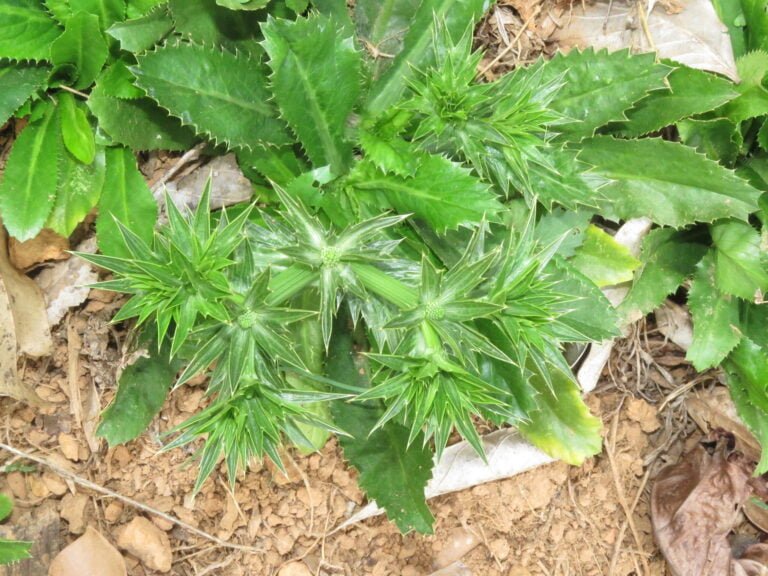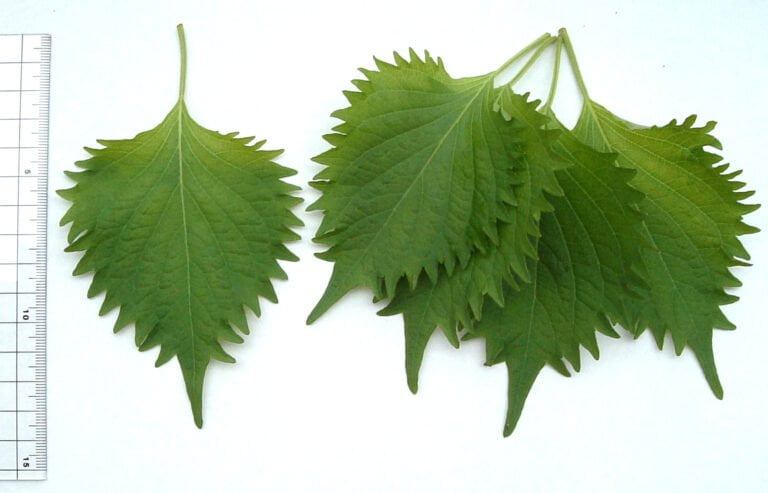Mitsuba
Mitsuba, also known as Cryptotaenia japonica, originates from Japan, China, and Korea. In Japanese cuisine, it’s cherished for its fresh flavor and aesthetic allure. The leaves, with their vibrant green hue and delicate aroma, enrich dishes with vitality. Its clean, bright taste, reminiscent of flat-leaf parsley, offers herbaceous notes and subtle celery undertones. Best enjoyed raw, mitsuba adds unique nuances to dishes. Try using it as a garnish in miso soup or donburi for a delightful twist. Curious to uncover more about this botanical gem’s culinary significance and health benefits?
Origins of Mitsuba
Mitsuba, with its delicate tripartite leaves and subtle aroma, traces its origins to the temperate regions of Japan, China, and Korea. As a staple in Japanese cuisine for centuries, this herb, known scientifically as Cryptotaenia japonica, holds cultural significance and culinary importance in the Land of the Rising Sun. The Japanese have revered Mitsuba not only for its fresh and bright flavor but also for its aesthetic appeal when used as a garnish.
In Japan, Mitsuba is commonly found in gardens and is a familiar sight in both traditional and modern dishes. Its clean taste adds a unique dimension to recipes such as miso soup, donburi, and various fried foods. The herb’s distinct flavor profile shines best when consumed raw, showcasing its crisp texture and invigorating notes. When cooking with Mitsuba, it is essential to exercise caution and add it towards the end of the cooking process to prevent bitterness from developing.
The Japanese have mastered the art of incorporating Mitsuba into their culinary repertoire, elevating dishes with its subtle yet pronounced taste. Its popularity in Japanese cuisine underscores the herb’s significance as a flavorful and aromatic herb that continues to charm palates worldwide.
Fresh Vs. Dried Mitsuba
Fresh mitsuba, with its vibrant green hue and delicate aroma, offers a culinary experience that boosts dishes to new heights. As someone who appreciates the nuances of fresh herbs, the contrast between fresh and dried mitsuba is truly striking. Here’s why fresh mitsuba stands out:
- Vibrancy: The fresh mitsuba leaves exude a lively green color that adds a burst of vitality to any dish. When compared to dried mitsuba, the visual appeal of fresh leaves is unparalleled, making them a preferred choice for garnishing salads, sushi, and other raw preparations.
- Aroma: The delicate scent of fresh mitsuba is unmistakable. It carries subtle hints of parsley but with a unique twist that sets it apart. When used in its fresh form, the aroma of mitsuba enhances the overall sensory experience of a dish, making it more welcoming and appealing.
- Flavor: The flavor of fresh mitsuba is clean, bright, and best enjoyed in its raw state. Unlike dried mitsuba, which is primarily used for flavoring during cooking, fresh mitsuba loses its delicate flavor if subjected to high heat. Its parsley-like notes add a revitalizing dimension to dishes, making it a sought-after herb for boosting the overall taste profile.
Flavor Profile of Mitsuba
Mitsuba boasts a flavor reminiscent of flat-leaf parsley, with hints of fresh green notes entwined with subtle echoes of celery, angelica, and cilantro. Its delicate yet vibrant taste is best savored in its raw state, ensuring a clean and crisp essence in dishes. Commonly used as a garnish in Japanese culinary creations, Mitsuba’s bright and invigorating profile enhances dishes like miso soup, donburi, and salads with a touch of herbal finesse.
Taste of Mitsuba
With a flavor reminiscent of flat-leaf parsley but with a unique blend of fresh green undertones and hints of celery, angelica, and cilantro, the taste of Mitsuba is a delightful exploration for the palate. When you experience Mitsuba’s flavor, you’ll notice:
- Bright and Herbaceous Notes: The fresh green taste of Mitsuba adds a vibrant and herbaceous quality to dishes, enhancing the overall flavor profile.
- Subtle Celery-like Undertones: The subtle notes of celery in Mitsuba bring a revitalizing and crisp element to dishes, creating a harmonious balance of flavors.
- Distinctive Cilantro and Angelica Hints: The hints of cilantro and angelica contribute to Mitsuba’s unique taste, adding layers of complexity that enhance culinary creations.
Exploring Mitsuba’s taste is like embarking on a botanical journey through a garden of fresh and aromatic delights.
Culinary Uses
Embarking on a culinary journey with Mitsuba reveals a subtle interplay of flavors that elevate dishes with a vibrant and botanical essence. This green herb, also known as Japanese parsley, offers a flavor profile similar to flat-leaf parsley but with a distinctive twist. Its crisp green undertones are paired with hints of celery, angelica, and cilantro, creating a invigorating and delicate taste. Best enjoyed in its raw form, Mitsuba is a prized herb in Japanese cuisine, often used as a garnish in dishes like miso soup, donburi, and salads. Care must be taken not to overcook Mitsuba, as this can result in bitterness. Utilize both the leaves and stems of Mitsuba to incorporate a light and invigorating touch to your culinary creations.
Health Benefits
How can the delicate blend of fresh green undertones, hints of celery, angelica, and cilantro in Mitsuba contribute to the health benefits of this prized herb in Japanese cuisine?
- Rich in Antioxidants: Mitsuba, also known as Japanese parsley, contains antioxidants like vitamin C and beta-carotene, which help combat free radicals in the body.
- Nutrient-Dense: With a flavor profile akin to flat-leaf parsley, mitsuba is a good source of vitamins and minerals, including vitamin K, calcium, and iron, essential for overall health.
- Digestive Aid: The combination of celery-like notes and cilantro hints in Mitsuba can aid digestion and promote gut health when consumed regularly.
Cooking Tips for Mitsuba
When handling mitsuba in the kitchen, it’s important to store it properly to maintain its freshness and flavor. Different cooking techniques can be applied to mitsuba, such as using it as a garnish, incorporating it into salads, or adding it to soups just before serving. Exploring the flavor pairings that complement mitsuba can enhance your culinary creations to new heights.
Storage Tips for Mitsuba
Fresh mitsuba, whether just purchased or harvested from the garden, benefits greatly from proper storage techniques to maintain its vibrant color and delicate flavor. Here are three key storage tips for preserving this herb:
- Store in Water or Damp Paper Towel: Keep fresh mitsuba in water or wrap it in a moist paper towel before placing it in the refrigerator to make sure it stays hydrated and crisp.
- Consume Within a Week: For best freshness and flavor, it is recommended to consume fresh mitsuba within a week of purchase, considering its initial quality.
- Cool and Damp Environment: To preserve its delicate flavor and appearance, store mitsuba in a cool and moist environment, such as the refrigerator, to prolong its shelf life and maintain its bright green color.
Cooking Techniques for Mitsuba
Delicately handling mitsuba in culinary preparations is essential to preserve its fresh green vibrancy and distinct flavor profile. As a versatile herb also known as Japanese parsley, mitsuba is best enjoyed raw as a garnish due to its delicate flavor. When cooking with mitsuba, it is important to avoid overcooking, as this can result in bitterness. To fully benefit from its taste-enhancing qualities, mitsuba is often added towards the end of cooking in dishes like miso soup, donburi, fried foods, salads, hand rolls, and ochazuke. The entire mitsuba plant is edible, including the leaves, stems, roots, and seeds, providing a wide range of culinary uses. By gently incorporating mitsuba into dishes, its vibrant green color and unique taste can be preserved, elevating the overall culinary experience.
Flavor Pairings for Mitsuba
Selecting flavor pairings that complement mitsuba’s delicate profile can uplift culinary creations with a vibrant herbaceous touch.
- Mitsuba enriches the freshness of seafood dishes like sushi and sashimi, imparting a subtle herbaceous note that harmonizes with the oceanic flavors.
- When paired with rice dishes such as chirashi bowls and donburi, mitsuba adds a bright, herbaceous element that heightens the overall taste profile.
- Incorporating mitsuba into salads provides a revitalizing green component, adding depth and complexity to the dish with its unique Japanese parsley flavor.
Mitsuba in Japanese Cuisine
In Japanese cuisine, Mitsuba, a herb prized for its clean and bright flavor, is a popular addition to dishes like miso soup and salads. This delicate herb, with its notes reminiscent of celery, angelica, and cilantro, brings a revitalizing and unique taste to traditional Japanese recipes. Mitsuba is often used raw as a garnish, allowing its fresh green brightness to enrich the overall presentation and flavor profile of the dish.
One of the key characteristics of Mitsuba is its ability to heighten the taste of simple dishes like miso soup and donburi. When added as a finishing touch, Mitsuba imparts a subtle yet distinct flavor that complements the other ingredients, creating a harmonious blend of tastes. Its presence adds a layer of complexity without overpowering the dish, making it a favorite herb among Japanese chefs and home cooks alike.
To fully appreciate Mitsuba’s contribution to a dish, it is essential not to overcook it, as this can lead to bitterness. By adding Mitsuba towards the end of the cooking process or using it as a garnish, its delicate flavor remains intact, providing a delightful contrast to the other components of the dish. Overall, Mitsuba’s role in Japanese cuisine highlights its versatility and ability to enrich a wide range of dishes with its unique and vibrant taste.
Mitsuba Substitution Options
With its distinct flavor profile, exploring substitution options for Mitsuba opens up a world of culinary creativity and experimentation. When considering alternatives to Mitsuba, parsley emerges as a frontrunner due to its similar flavor profile. The vibrant green color and fresh taste of parsley make it a suitable replacement in dishes where Mitsuba is traditionally used. Additionally, chervil and celery leaf can step in as substitutes, offering their unique nuances to enhance the dish in different ways.
- Parsley: Known for its bright and herbaceous flavor, parsley is a versatile herb that can mimic the fresh green brightness that Mitsuba brings to a dish. Whether finely chopped and sprinkled over a salad or used to garnish a soup, parsley can seamlessly replace Mitsuba in various culinary applications.
- Chervil: With a delicate flavor reminiscent of anise, chervil can be a sophisticated substitute for Mitsuba. Its subtle licorice notes can add an unexpected twist to dishes where Mitsuba’s herbal essence is desired.
- Celery Leaf: Offering a mild and slightly bitter taste, celery leaf can provide a rejuvenating substitute for Mitsuba. Its crisp texture and enhance flavor make it a suitable option for dishes that call for the unique qualities of Mitsuba.
Where to Purchase Mitsuba
Located among the vibrant aisles of Asian grocery stores, particularly those of Japanese, Chinese, and Korean origins, one can easily obtain the verdant allure of Mitsuba. As I stroll through these markets, the distinctive appearance of Mitsuba stands out, often sold intact with its delicate roots attached, showcasing its freshness. This Japanese herb, with its vibrant green hue and delicate serrated leaves, adds a touch of elegance to any dish it graces.
It’s fascinating to note that Mitsuba is more commonly available fresh rather than dried, a validation of its revered status in Asian cuisine for its nuanced flavor. For those with a green thumb, cultivating Mitsuba in Asian-focused gardens offers a rewarding way to secure a fresh supply of this herb. The process of growing Mitsuba at home also allows for a deeper connection to the culinary traditions where this herb plays a crucial role.
When bringing Mitsuba home, proper storage is key to preserving its freshness. Wrapping the herb in damp paper towels and storing it in the refrigerator can prolong its shelf life for about a week, ensuring that its delicate flavor and visual appeal are maintained until it’s time to lift another dish with this Japanese gem.




